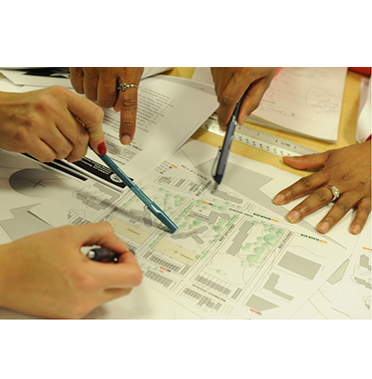Creating a Disaster Recovery Plan
About Disaster Recovery Plans
Disaster Recovery Plans (sometimes called Pre-Disaster Recovery Plans) outline how the community will recover after a disaster. This is different than a Business Continuity Plan, which is focused on what happens during the disaster and how to keep things going as smooth as possible. Having guidance and a procedure for long-term recovery in place before the event makes it easier to recover in alignment with the community vision. From the Colorado State Resiliency Office, “Research has shown that communities with Disaster Recovery Plans tend to recover more quickly, efficiently, and equitably than those without.”
Disaster Recovery Plans are not required and do not currently have any funding incentives. As a result, many jurisdictions do not have them. However, they are very important and can make it much easier to get funding after an event.
Building a Disaster Recovery Plan, like other planning processes such as General Planning (overall vision for the local area and how land will be used) and Hazard Mitigation Planning (what hazards are possible and what you will do now to reduce their impacts). While the planning process can take months, it is a unique opportunity to build community connections and set up strong systems for coordination.
Steps to creating a Disaster Recovery Plan:
- Assemble a diverse planning team, including frontline communities and those with lived experience recovering from a disaster
- Understand the situation: review other disaster and community planning documents. Identify impacts and potential consequences.
- Determine goals and objectives
- Assess community capacity and identify challenges
- Establish a process for post-disaster decision-making and policy setting
- Develop the plan
- Review and approve the plan
- Plan implementation and maintenance
To create a Disaster Recovery Plan, use the following helpful tools:
- FEMA’s Pre-Disaster Recovery Planning Guide for Local Governments
- Colorado Resiliency Office Pre-Disaster Recovery Guidance
- Pre-Disaster Recovery Planning: Resources from the Association of Bay Area Governments
Here are a few examples of Disaster Recovery Plans and Case Studies:
- Fairfax County Pre-Disaster Recovery Plan
- Oregon Disaster Recovery Plan
- Pre-Disaster Recovery Planning for Disaster Recovery and Case Studies from the University of Oregon
Impacts on frontline communities
Recovery from a disaster often reaches frontline communities last. However, conducting a Disaster Recovery Plan is an opportunity for frontline communities to be directly involved in shaping an equitable recovery strategy.
Actions to take
For community-based organizations and affordable housing providers
- Create your own Disaster Recovery Plan. Ask for support from your local Office of Emergency Services. If you have a plan in place, you will be better able to serve your community after an event.
- Encourage your local Office of Emergency Services to create a Disaster Recovery Plan. This research shows the importance of incorporating affordable housing into Disaster Recovery Plans.
- Offer to be part of any local or State planning process on Disaster Recovery.
- Create a Community Risk Assessment in advance of an event and share it as part of the planning process.
For local and State government
- Prioritize creating a Disaster Recovery Plan for your agency.
- Include frontline communities in the planning process and be sure to listen to their ideas and recommendations.
- Create incentives or mandates for jurisdictions to create Disaster Recovery Plans.
For philanthropy
- Support local government and community-based organizations in doing Disaster Recovery Planning.
- Advocate for more funding from the state for Disaster Recovery Planning. Ensure that there is funding set aside for rural and small jurisdictions.

- Climate Risk Reduction
- Technical Assistance